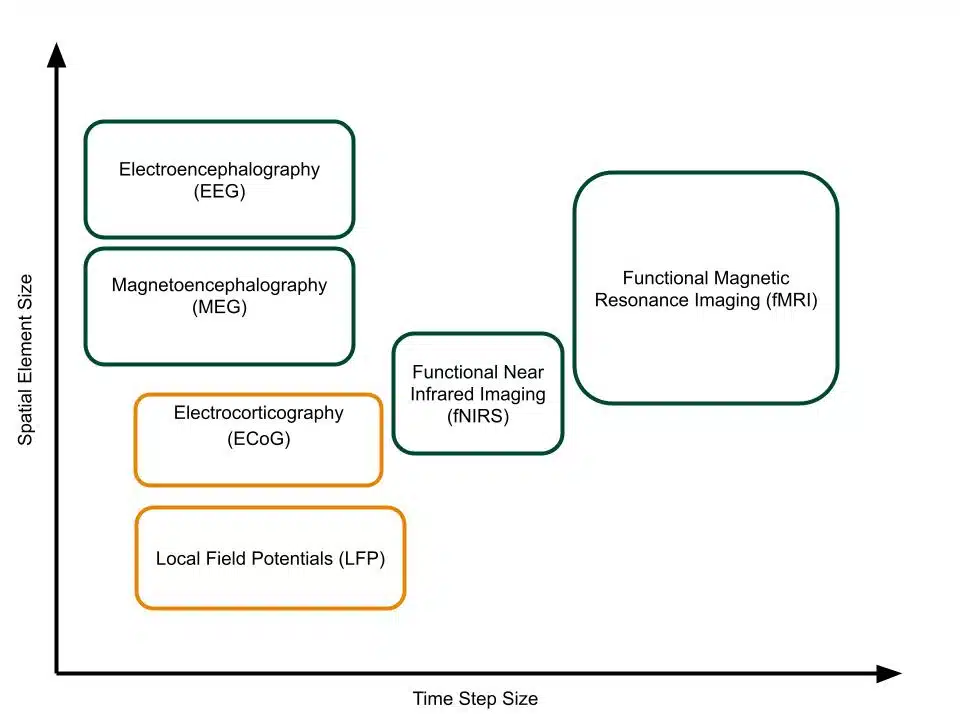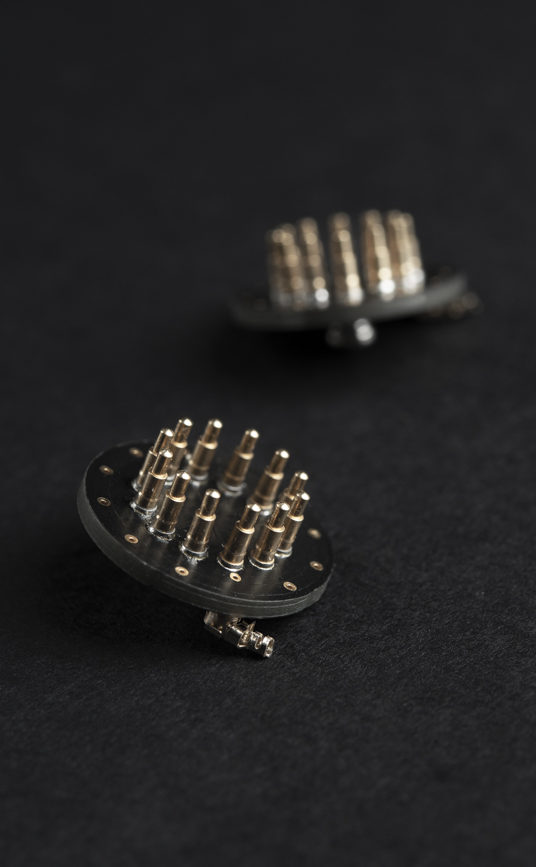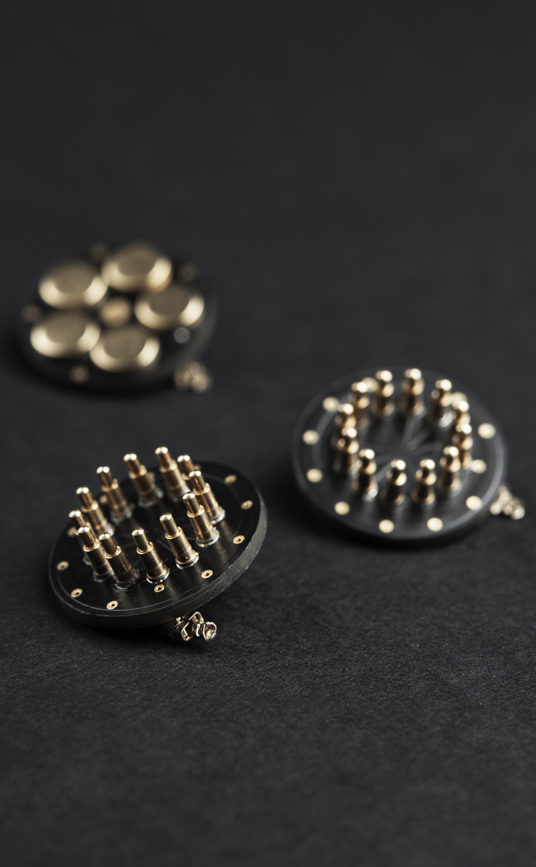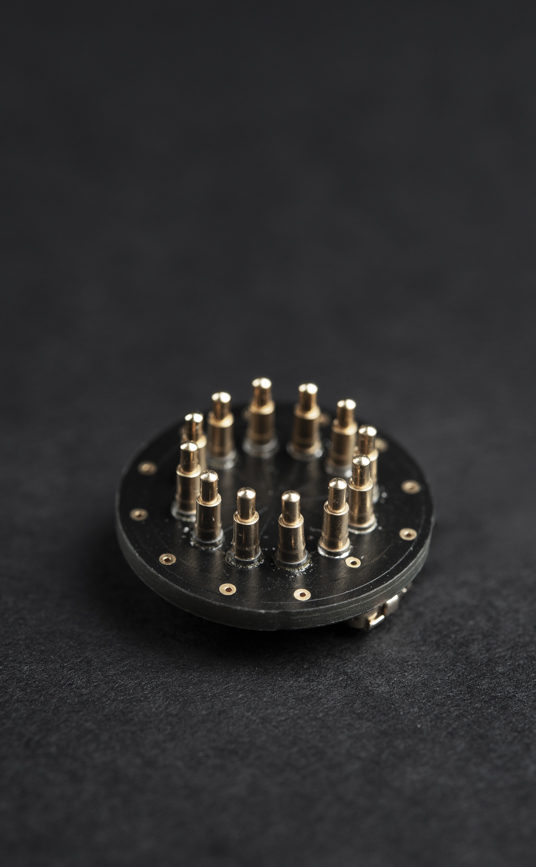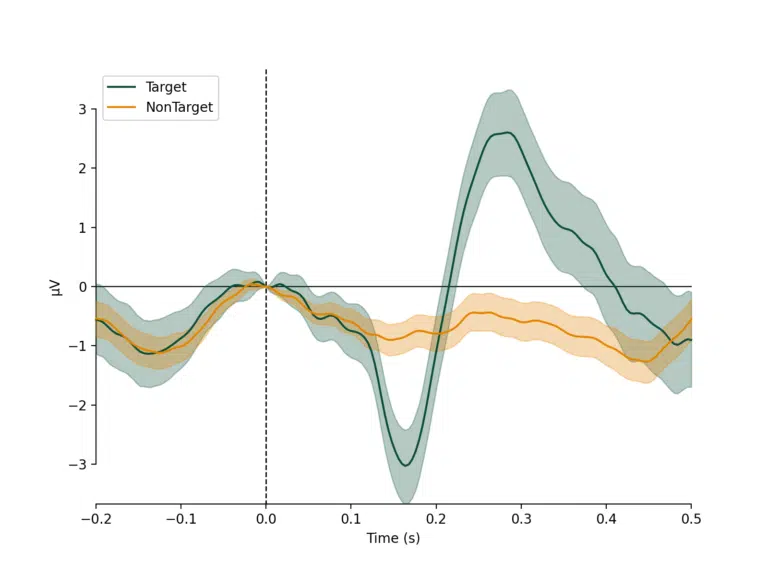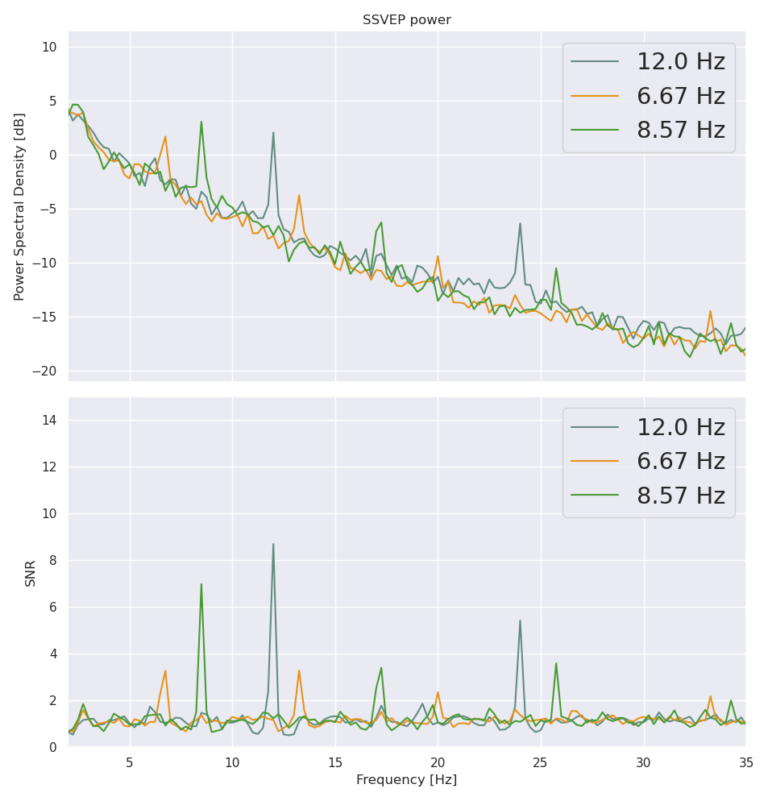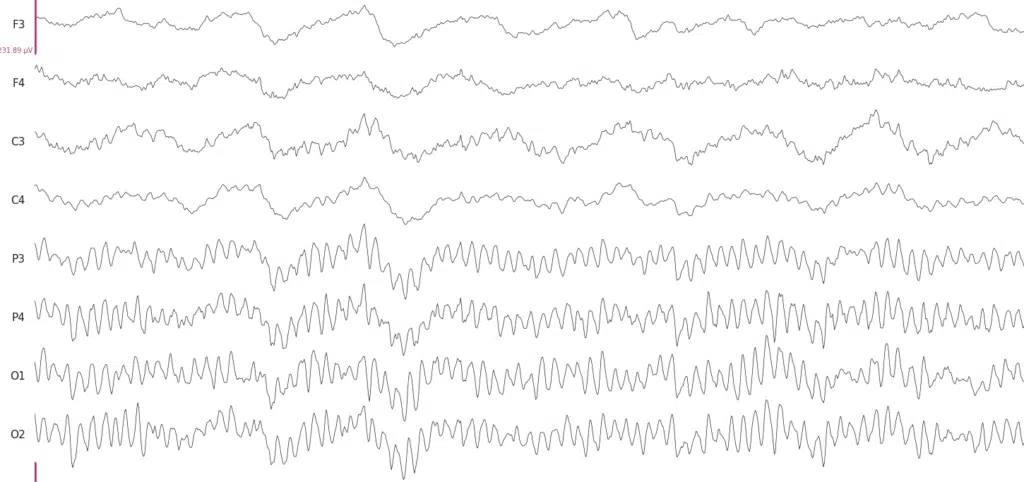The P300 paradigm can be used for applications where a person can select from multiple presented options simply by focusing on a particular option. A keyboard interface can allow a person to type letters and is particularly useful for people diagnosed with ALS syndrome who can’t use conventional keyboards.
The P300 paradigm can also be employed in a more passive way and, for example, study how a person reacts to various stimuli when using simulators, operating critical machinery, or even when browsing web pages in order to optimize the presentation of the interface. The versatility of P300 even extends to the application of criminology, where a suspect can be presented with object photos from a crime scene, and from a P300 response, it can be determined if a person was at the crime scene and saw these particular objects or not.
The peak of the P300 is relatively small and is typically hidden in the noisy EEG software recordings and usually, an average of repeated measurements has to be taken to reveal P300 potential as shown in the previous figure.
Here, at Neurotechnology, we train machine learning algorithms to detect P300 signals even when they are buried in the noise and would not be detectable by conventional algorithms. We also aim to minimize the number of required electrodes for the detection of P300 potential in order to minimize and reduce the costs of the required hardware.
It is worth noting that for active control when a person is trying to choose from multiple presented options, the process can be very long when the number of options is large. For example, it can take up to tens of seconds when choosing a letter from a keyboard. Therefore, a very important research direction is trying to minimize this time with the so-called ‘fast P300’ algorithms where stimuli at smaller intervals than 300-400 ms and algorithms have to cope with overlapping P300 potentials in the recordings.

